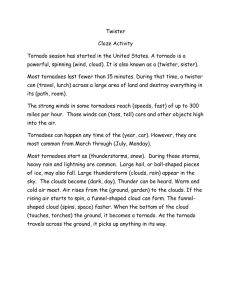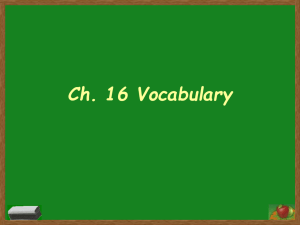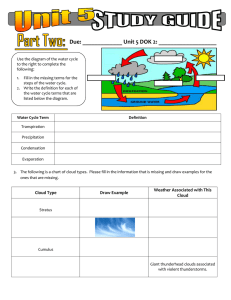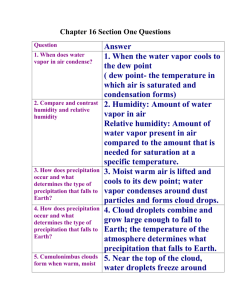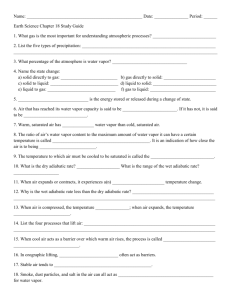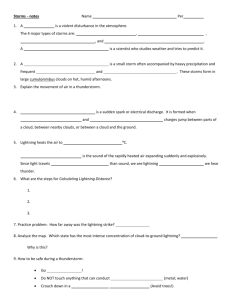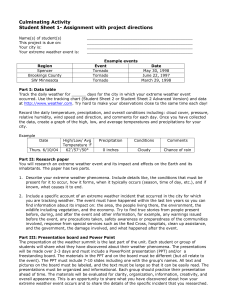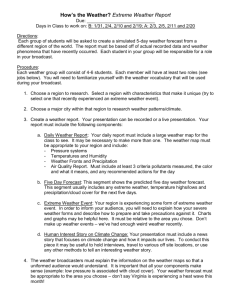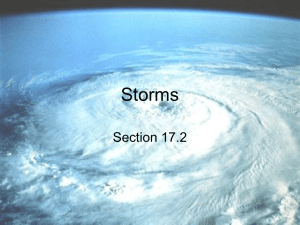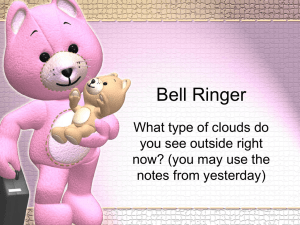Chapter 7 Weather Test Review
advertisement
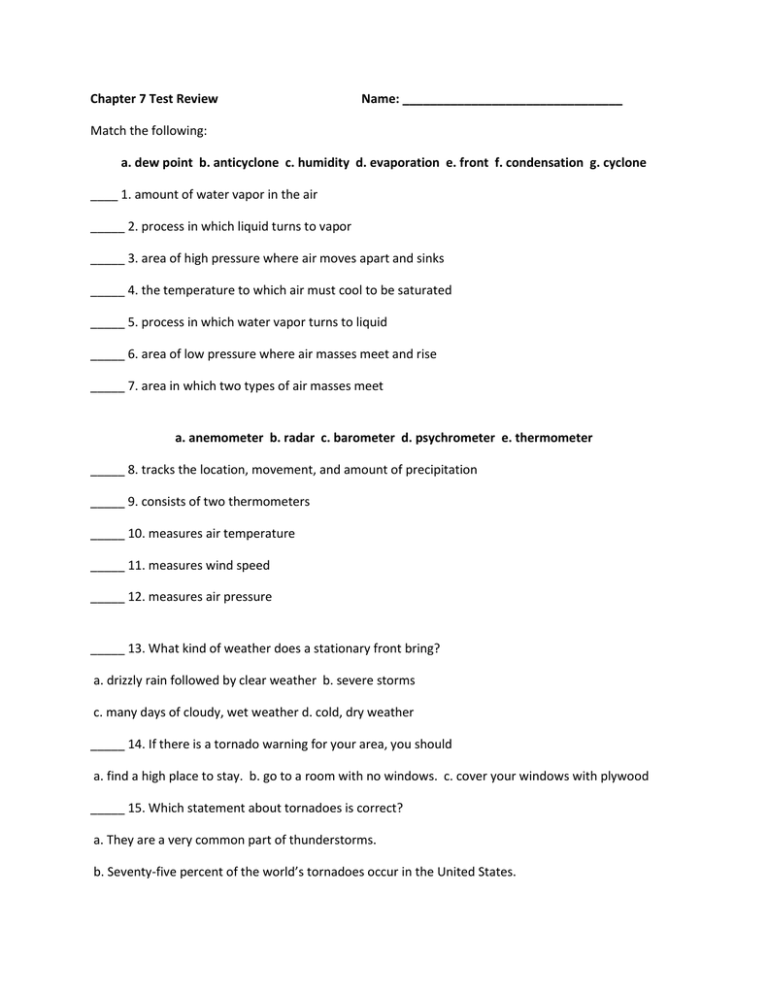
Chapter 7 Test Review Name: ________________________________ Match the following: a. dew point b. anticyclone c. humidity d. evaporation e. front f. condensation g. cyclone ____ 1. amount of water vapor in the air _____ 2. process in which liquid turns to vapor _____ 3. area of high pressure where air moves apart and sinks _____ 4. the temperature to which air must cool to be saturated _____ 5. process in which water vapor turns to liquid _____ 6. area of low pressure where air masses meet and rise _____ 7. area in which two types of air masses meet a. anemometer b. radar c. barometer d. psychrometer e. thermometer _____ 8. tracks the location, movement, and amount of precipitation _____ 9. consists of two thermometers _____ 10. measures air temperature _____ 11. measures wind speed _____ 12. measures air pressure _____ 13. What kind of weather does a stationary front bring? a. drizzly rain followed by clear weather b. severe storms c. many days of cloudy, wet weather d. cold, dry weather _____ 14. If there is a tornado warning for your area, you should a. find a high place to stay. b. go to a room with no windows. c. cover your windows with plywood _____ 15. Which statement about tornadoes is correct? a. They are a very common part of thunderstorms. b. Seventy-five percent of the world’s tornadoes occur in the United States. c. Their danger is mainly from the heavy rains they bring. d. They are the strongest storms on Earth. _____ 16. A storm surge is a dangerous part of a. a tornado. b. a thunderstorm. c. the water cycle. d. a hurricane. _____ 17. Which describes an altocumulus cloud? a. high, feathery cloud b. puffy mid-level cloud c. low storm cloud d. high cloud made of ice crystals _____ 18. Isobars help meteorologists by a. creating an image of weather systems. b. showing what form precipitation will take. c. measuring wind speeds. d. showing high and low pressure areas. _____ 19. Lightning is an electric discharge between a positively charged area and a. a rising air mass. b. a source region. c. another positively charged area. d. a negatively charged area. _____ 20. Meteorologists track cyclones and anticyclones because they a. are dangerous forms of severe weather. b. help predict stormy or clear weather. c. help forecast weather weeks in the future. d. give more accurate facts than fronts. _____ 21. Which statement about hail is correct? a. It is rain that falls through a layer of freezing air. b. It may be sent up into the clouds many times. c. It forms in winter in low stratus clouds. d. It is a liquid form of precipitation. 22. Study the maritime/continental/polar/tropical diagrams/maps.

